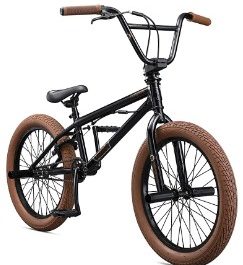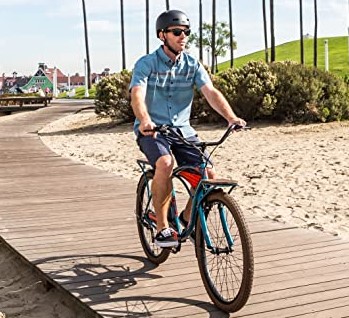Bike riding is not just for the selected few but for all. Even if someone has lousy hip or knee pain caused by injury, they can ride a bike. If you are looking for a workout method, then the question is, ‘is biking good exercise?’
Well, biking is good exercise. It can help lower cholesterol levels, fight off cardiovascular diseases and cancer, strengthen your lower body, and have a positive morning start. Moreover, it can improve your body posture, coordination, and balance.
As good as this sounds, biking has its fair share of concerns. Some see it as time-consuming, and if you cycle for long hours, you may compress your nerves and arteries, which can be painful.
So, this guide will look at the two sides of cycling, the good and the bad. I will also answer some questions relating to the topic.
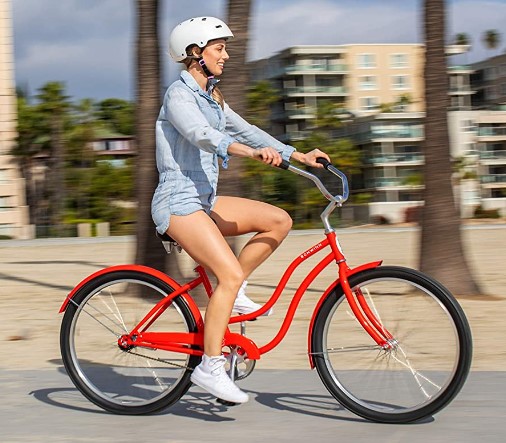
Is Biking Good Exercise?
To answer the question, let’s look at the cycling benefits and disadvantages below;
Benefits of Cycling
Let’s begin with the benefits.
1. Cycling Can Lower Cholesterol Levels
Not all cholesterol is terrible. Good cholesterol helps make hormones and vitamins, build cells, and digest fatty foods.
The concern, however, is the ‘bad’ cholesterol, popularly known as low-density lipoprotein (LDL). If the bad cholesterol level increases, it can be a threat to your health and can trigger cause stroke and heart attack.
But as the American Heart Association states, you can get rid of the bad cholesterol if you do moderate-intensity workouts like cycling for 150 minutes every week.
Another study by the Journal of the American Heart Association reveals that people who cycle to work or run errands in town have a lower cholesterol level than those who don’t.
So, we can say that cycling is a good exercise that helps you shed ‘bad’ cholesterol. But to see more effect, you need to tame your diet and ensure you burn more calories than you consume.
2. Cycling Can Help Fight Off Cardiovascular Disease and Cancer
Cycling is a low-impact aerobic activity. One researcher by the Macmillan Cancer Support utters that ‘cycling during and after cancer treatment is safe.’
However, if you feel hesitant about it, you should talk to your doctor for more advice and how to go about it.
And as Whittey Thoman of the MD Anderson’s Cancer Prevention Center argues, cycling can reduce cancer risk. He continues to say that it could be good if adults would revive their passion for cycling just as they enjoyed it when they were young if they ever cycled.
However, you should start slowly, ensure you remain hydrated, don’t overdo it, and wear protective gear like a helmet (Check on Amazon). Even better, ride with a partner.
Cycling also improves your overall heart health. It’s considered a good cardio workout. Research by the National Library of Medicine shows that cycling lowers cardiovascular diseases and heart failure deaths.
As the abstract states, inactivity is one significant risk for cardiovascular diseases. So, embrace cycling to improve your heart health and defeat heart-related illnesses.
3. Cycling Can Strengthen the Lower Body
Cycling usually works mainly on your lower body, and the parts that benefit the most are the glutes, hamstrings, quads, and calves. These muscles get enough strength without stressing the joints.
According to the National Library of Medicine research, cycling alone can strengthen and build your muscles. Though it may take time, it’s achievable, especially if you involve yourself in high-interval intensity training (HIIT), high-intensity workout, or cross-training like lifting weights.
You can involve workout routines like lunges, presses, and squats for even stronger leg muscles.
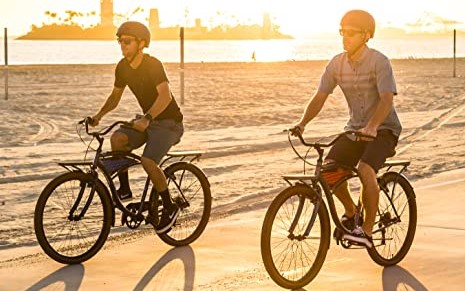
4. A Positive Morning Start
Cycling has several advantages regardless of the time of day you decide to ride. Nevertheless, there is something special about cycling before sunrise.
Maybe this is new to you, but when you wake up in the morning, your brain functions quite slowly and is usually at its alpha state.
In this state, you can only do small tasks like brushing your teeth or functions that don’t involve much thinking.
So, every morning you wake up and take your bike for a ride, you not only transition your brain from alpha to beta state but also get ample benefits.
So, we can say that riding your bike for 30 minutes – 1 hour every morning is healthy, boosts your blood circulation, metabolism, and energy, and enables you to torch fat, giving you a leaner body.
5. Cycling Can Improve Posture, Coordination, and Balance
Let’s face it. Most people cope with sedentary working environments. That is why they face the challenge of poor body posture.
Fortunately, it’s correctible, and cycling can help you achieve a good posture.
Generally, a good posture contributes to a healthy spine. So, ensure that you ride in a more upright manner. If you are old, coordination and balance become a big issue.
The two decline as one age and suddenly if you become inactive for so long. But if you cycle for 30 minutes a day with an upright back when pulling the shoulders back and forth without hunching them up to the ears, you will likely gain good balance and develop good posture.
Disadvantages of Cycling
As much as there are many fantastic advantages to cycling, there are several disadvantages. They include:
1. Cycling Can Be Time-Consuming
Cycling takes time. Not only that, but getting ready and preparing for a good ride also takes time. It’s all involving putting on your cycling clothes and shoes and other gears
Remember, before you can hit the road, you also need to check the chain and tires to ensure your bike is in good condition.
And again, unlike other forms of exercise, for you to get the best results, you need to spend more time cycling for at least an hour a day.
2. Cycling Can Compresses Arteries and Nerves
This usually happens to many hardcore riders or those who spend most of their time cycling. They are likely to compress the arteries and nerves.
A study by Harvard states that sitting for hours on a hard bike seat is likely to compress arteries and nerves associated with the reproductive organs.
When the nerves and arteries compress, they lead to butt and leg numbness. However, this is avoidable by getting a comfortable bike seat or a seat cushion (View on Amazon).
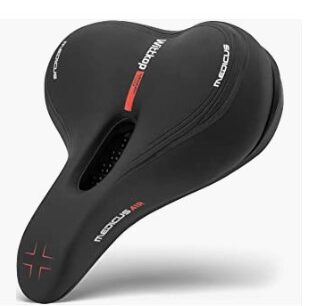
Is Riding a Bike Safe While Pregnant?
Riding during pregnancy is a personal decision. Women are different, as so is each pregnancy. While some expectant mothers stop riding immediately after confirming they are pregnant, others ride for three months or six months, and some ride full-term. But is riding a bike safe while pregnant?
Riding a bike while pregnant is safe if there are no risks such as abdominal, chest, and calf pain, vaginal bleeding, swelling, and regular painful contractions. However, you must take it slow, ride comfortably while seated, stay hydrated, wear the right gear, and don’t ride alone.
So, there are a few extra observations I’ll share later that you need to observe when cycling while pregnant.
But overall, several benefits come with cycling while expectant, including better blood circulation, digestion, sleep, mood, energy, weight management, stress, and backache relief, among others.
Remember, since a few risks are involved, it’s worth checking with your doctor before you can commence your cycling journey while pregnant. It is also good to heed your body and stop cycling when experiencing sharp abdominal pains, swelling, headaches, nausea, dizziness, muscle weakness, or vaginal bleeding.
This guide will look at the benefits of riding a bike while pregnant, how to do it and when to call it a quit.
Is Riding a Bike Safe While Pregnant? (The Benefits)
Cycling is a low-impact exercise that’s excellent for pregnant women. Below are the benefits attached to cycling while pregnant:
- Improved blood circulation
- Improved digestion
- You’ll get a peaceful sleep at night
- Cycling boosts your mood and energy
- It helps in managing your weight gain
- Tones your muscles
- Reduces backaches
- Reduces stress levels while increasing your self-esteem
- It gives you endurance and strength, which are necessary during childbirth
How to Ride a Bike When Pregnant? (Safety Tips)
Though it’s a good idea to ride a bike while pregnant, there is a limit that you need not exceed. So, if you are wondering how to ride when pregnant, you can follow the tips below:
1. Take It Slow
Cycling when pregnant and when not to are two different situations. When pregnant, you need to take it slow. That is not the time to win races. So, you should expect to ride slower than when you were not pregnant. That means you need to find places with less traffic or quieter routes.
We usually have three trimesters in pregnancy. During the first trimester (the first three months), most women experience morning sickness, dizziness, and nausea and become more anxious as the body undergoes a cycle of changes.
On the other hand, other women feel just fine and motivated to continue riding. So, whether to ride your bike during this period depends entirely on your health and what your doctors say.
In the second trimester, the malaise lifts, and you feel energetic, and it’s time to get back on your two wheels. Still, other women feel like giving up until they give birth.
But what about the third trimester? During this time, the belly has grown big, and most women feel tired, and it’s time for them to say goodbye. However, others feel like going on until the due date.
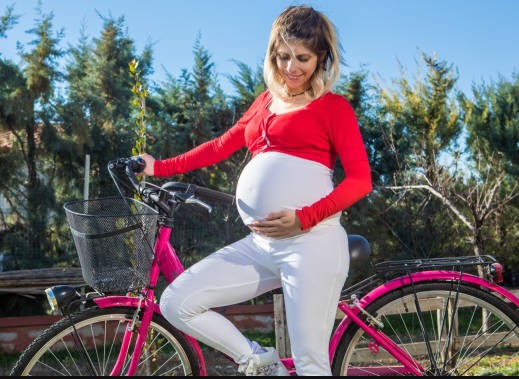
2. Sit Comfortably
Some people wonder how to sit on a bike during pregnancy. You must adjust the cycle to sit comfortably as the baby bump grows.
Remember, you need to ride more uprightly, so changing the height of your handlebars will be a great move.
Even better, you are likely to sit heavily on your saddle, so you need to switch to a more comfortable saddle (Check on Amazon).
The tip here is to remember that your pelvic floor will undergo a series of changes during the entire pregnancy, and you will likely experience added weight. So it would be best to keep tweaking your bike for a more relaxed and comfortable ride.
3. Bike While Seated
We all like riding in many different styles, one of which is standing. Well, it’s another case when pregnant, maybe forgiven during the first trimester.
During pregnancy, your joints become flexible and looser, making it difficult to stand while riding a bike.
Still, as the belly grows, it changes the body’s center of gravity, which means you’ll experience more pressure on the joints, making it difficult to stand while riding your bike.
So, during these times, staying seated is a good idea. Doing so will reduce the risk of injuring yourself during a ride.
4. Stay Hydrated
One fundamental principle you should never forget throughout your pregnancy is staying hydrated. Your body requires water to build new tissues, aid digestion, and supply nutrients to body organs.
So, before going for a ride, ensure you carry enough water. That said, taking in more water means one thing, you will pee frequently. If your plan is riding for long hours, you should know the area first to determine where to take potty breaks.
5. Wear The Right Gear
Heather Jeffcoat, Physical Therapist of DPT, says, ‘the biggest risk with biking outdoors is the risk of falling and abdominal trauma.’ That can only happen when you ride without the right gear.
So, one safety precaution to take while riding during pregnancy is to wear the right gear. It reduces the risk of an accident and the likelihood of a severe injury.
So, before you can hit the road, ensure that you wear protective clothing like maternity cycling clothes and a comfortable helmet (Check on Amazon).
6. Don’t Ride Alone
You should ensure you enjoy your ride every time you hit the outdoors. When pregnant, it should not be otherwise. So, you should have a support companion. It could be a friend or a partner.
Their company not only boosts your energy but will also act as a precautionary measure in cases of your safety. If you ride alone, I suggest you carry your ID or cell phone on every ride.
When to Stop Cycling When Pregnant (The Risks)
Pregnancies are different, and many women act differently during pregnancy. So, there are times you feel like going on and times you need to quit. It’s good to listen and heed your body’s signals.
The American College of Obstetricians and Gynecologists (ACOG) advises women to exercise during pregnancy. However, it would help if you do remember to listen to your body.
Below are signals that you need to put your bike aside:
- When you start experiencing abdominal pain
- Chest pain, calf pain, and swelling
- Headaches, dizziness, or dyspnea
- Muscle weakness
- Regular or consistent contractions (that are painful)
- Vaginal bleeding
When you experience any of the above warnings, it’s also a good idea to give it a quit and to visit your doctor for a checkup.

People Also Ask
Can You Ride a Bike While Pregnant Third Trimester?
Leak Keller, a certified personal trainer and founder of Every Mother, says, ‘bike riding is a safe, low impact option for aerobic exercise that can be carried out throughout the pregnancy.’
So, it’s safe to ride your bike throughout your pregnancy. However, listening to your doctor and your body would be best. You can enjoy the ride if your doctor says it’s okay and your body is fine.
But if your doctor doesn’t clear you or you feel dizziness, headaches, abdominal pains, painful contractions, or muscle weakness. It would be best if you put your bike aside.
Can Riding a Bike Cause Miscarriage?
Bike riding is safe for pregnant women. However, it would be best to dial down the level of cycling intensity. Remember, increased physical activity increases the risk of miscarriage. Even worse, cycling accidents may cause head injuries that can lead to a miscarriage.
So, ensure you take it slow and wear protective gear when riding your bike while pregnant.
Can You Ride a Bike While Pregnant Second Trimester?
Yes! You can ride a bike in the second trimester. Most women gain back energy during the second trimester, and the body is now used to the baby growing inside them.
However, every pregnancy is different. When some women feel this way, others feel tired and won’t ride anymore. So, listening to your body and remembering, going on, or stopping is a personal decision.
Is biking good exercise for weight loss?
Cycling is a good and healthy way to lose weight. However, it depends on your workout routine and intensity. You can’t bike once a week or ride in your comfort zone for less time and expect to lose more fat.
Thus, if you are looking forward to losing weight, you need to involve yourself in high-interval intensity workouts, cross-training, and high-intensity cycling and tame your diet.
What are the effects of cycling on body shape?
Cycling every day for 1 hour will positively impact your body shape. You will likely lose weight when you cycle routinely, embrace intensive cycling routines, and curb your diet.
That means you can have a leaner body, especially if you are obese. Also, cycling works on your lower body muscles. So, you will likely look more masculine.
What muscles does cycling tone?
Cycling helps in toning muscles. These muscles include the thigh muscles (that consists of the quads and hamstring), the glutes, the calf muscles, the shoulder muscles, the arm muscles (the triceps and biceps), and the core, which includes the glutes, spine, stomach, pelvis and lower and upper back muscles.
So, in short, cycling tones your upper and lower body muscles.
How long should I bike for a good workout?
You should at least cycle 30 –1 hour a day for a good workout, 3 – 5 days a week.
For significant effect, ensure you embrace high-interval intensity training (HIIT), do more high-intensity workouts, and involve yourself with cross-training, like lifting weights.
Is Biking Good Cardio?
As seen, cycling is an excellent cardiovascular workout. It boosts circulation and minimizes the risk of heart-related diseases.
To tackle heart-related diseases, you should cycle during and after treatment. However, consult your doctor before you commence your cycling journey.
In conclusion, is biking good exercise?
As seen, biking is good exercise. It can help lower cholesterol levels. It’s a good workout for those with cardiovascular and cancer problems and can improve your body posture, coordination, and balance.
It, however, can compress the nerves and arteries that supply the reproductive organs, something you should be wary of.
